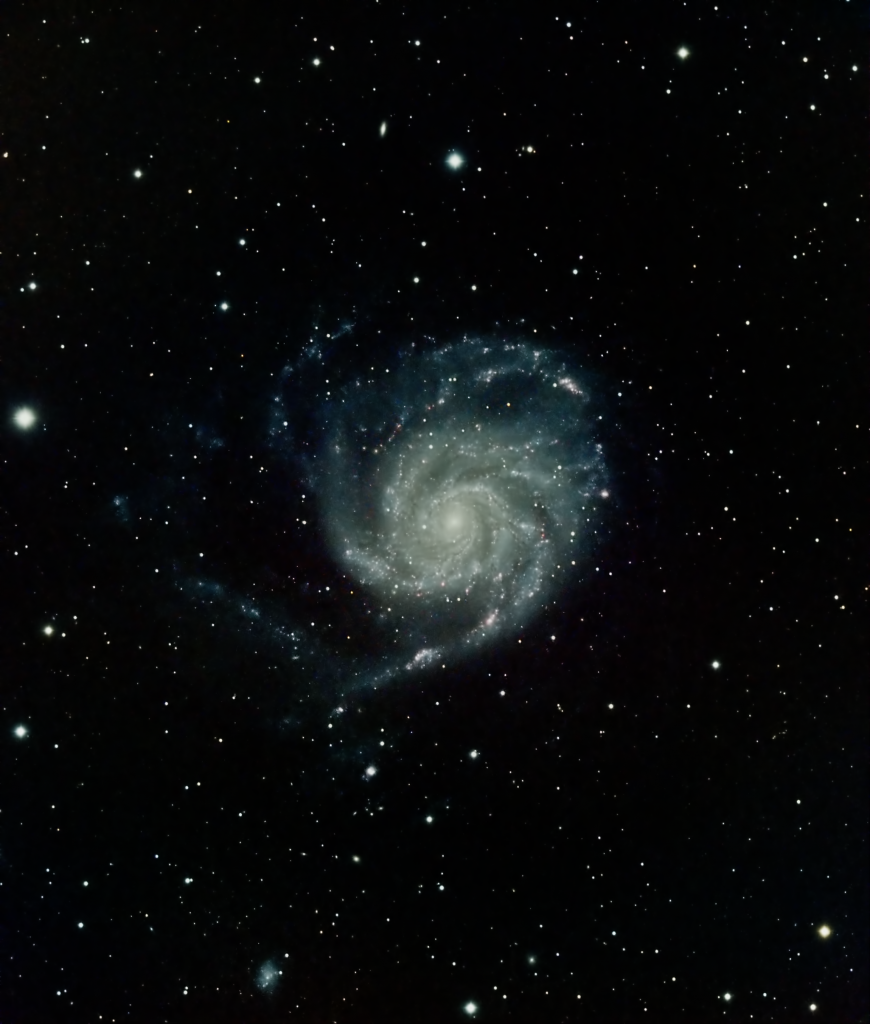
Similar Posts

The Ghost of Cassiopeia
Technically this nebula is called IC63, but its common name “The Ghost of Cassiopeia” seems much more timely, given Halloween is just around the corner! Imaged all night last night, mostly in true colors with some Hydrogen emissions added in to enhance it.

A bunch of obscure galaxies in Virgo (NGC5364 and friends)
There’s a big cluster of galaxies within Virgo; it’s just filthy with them. People usually image a different part of it, but I found another interesting area that’s often overlooked. The grand-design spiral at the bottom is NGC5364; it’s about 55 million light-years away. The annotated image identifies its buddies.

The Iris Nebula
Located about 1,300 light-years away, the Iris Nebula is a reflection nebula – unlike most of the nebulas on this site, it’s not made of ionized gases emitting light of their own. It’s just starlight reflecting off clouds of dust. Reflection nebula are harder to image in light-polluted skies, since the narrowband filters we use…

Going big with the Soul Nebula
This is my first attempt at a mosaic… basically stitching together three views of an object that’s normally too large in the sky to fit within the field of view of my telescope. It came out alright! We’ve had a great run of clear nights the past few weeks in Florida, and I’ve invested just…

The Needle Galaxy
Somewhere between 30 and 50 million light-years away, within the constellation Coma Berenices, lies NGC4565 – commonly known as the “Needle Galaxy”. It’s a spiral galaxy, but viewed edge-on – so we see its central bulge and the edge of the galaxy’s disc extending from it. Clouds of dust within the galaxy obscure the middle…

A Spooky Knot in the Veil Nebula
Taken just prior to Halloween in 2018, the southeastern knot of the Eastern Veil Nebula takes on a ghostly appearance when imaged in the Hubble palette with narrowband filters.

